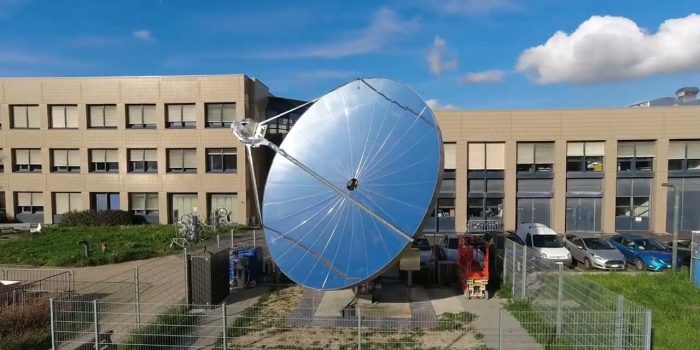The development of sustainable fuels and chemicals from solar energy is an important step towards a greener future. EPFL researchers have constructed a pilot-scale solar reactor that has achieved unprecedented efficiency levels in producing hydrogen, oxygen, and heat.
The EPFL campus has a unique parabolic dish that mimics an artificial tree, with a reactor located above the dish that uses sunlight concentrated 1,000 times to transform water into hydrogen, oxygen, and heat. The pilot reactor has reached an output power of nearly 2 kilowatts while maintaining a record-high efficiency level for this scale.

The system also includes an integrated photoelectrochemical reactor that electrolyzes water molecules into hydrogen and oxygen using solar energy. The heat produced by the reaction is utilized through a heat exchanger, while the oxygen is collected and harnessed for medical applications.
The EPFL spinoff company, SoHHytec SA, is commercializing the technology, which is appropriate for industrial, commercial, and residential applications. The company is working with a Swiss metal manufacturing facility to construct a multi-100 kW demonstration plant that will provide heat for the factory’s hot water needs, oxygen for local hospitals, and hydrogen for metal annealing operations.
In addition, the EPFL campus system could also provide residential power with hydrogen fuel cells, central heating, and hot water for homes and businesses. With their artificial photosynthesis system, EPFL researchers are exploring new technical possibilities, including a large-scale solar-powered device that splits carbon dioxide instead of water, producing valuable compounds for liquid fuel or the green plastic precursor ethylene.
“This is the first system-level demonstration of solar hydrogen generation. Unlike typical lab-scale demonstrations, it includes all auxiliary devices and components, so it gives us a better idea of the energy efficiency you can expect once you consider the complete system and not just the device itself,” said Sophia Haussener, head of the Laboratory of Renewable Energy Science and Engineering.

The breakthrough achieved by EPFL researchers and the commercialization efforts by SoHHytec SA could bring us one step closer to a sustainable and greener future.


